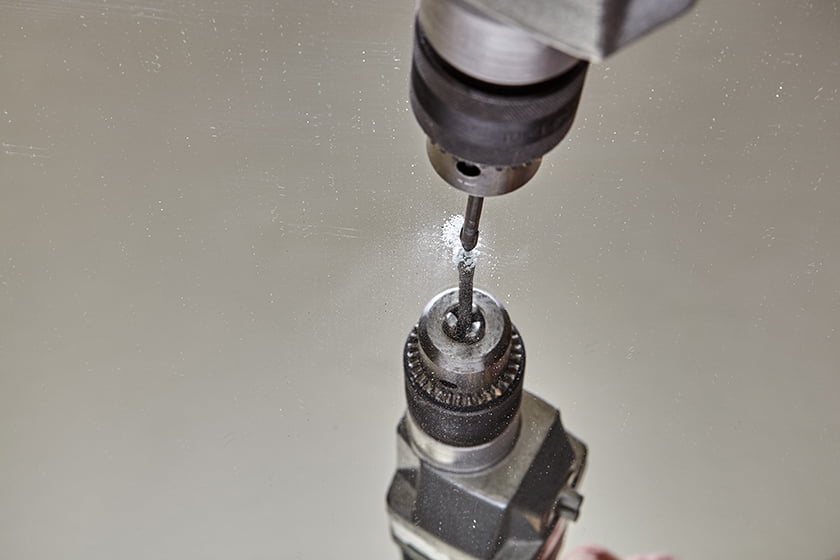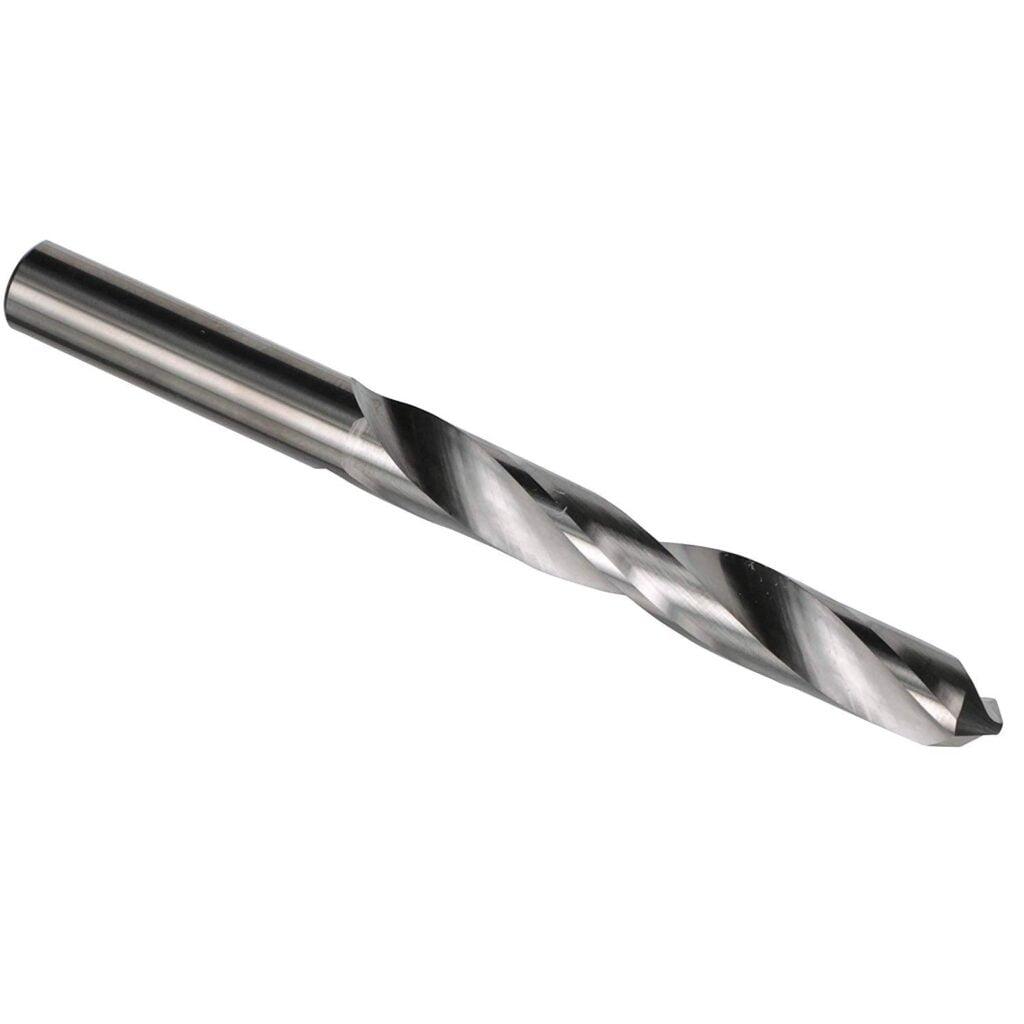Table of Contents
When you want to drill a hole into glass your might find yourself in a stepping stone situation, where you risk not only breaking the glass but also injuring yourself. However, certain DIY tasks and crafts require this talent, and you’ll be glad you have it whether you’re hanging a frameless mirror or making a custom light shade.


Tools and Materials Needed
- Variable speed drill
- Gloves
- Safety goggles
- Carbide drill bit
- Lubricating oil
- Permanent marker
- 600-grit sandpaper or diamond file
- Masking tape
- Dust mask
What to Know Before You Begin Drill into Glass
Drilling Speed
Drill a hole into glass too quickly might cause the bit to overheat and break. Check the range of your variable-speed drill’s settings. “0-1500 rpm” should be written on the label. It will turn 1,500 times per minute if you fully depress the trigger.
Only halfway squeezing the trigger causes it to spin at 750 rpm. With a little more release, you’ll get to 375 rpm. Experiment with this and you’ll be able to estimate the drill’s speed based on the sound it makes and how it feels in your hand.
Drill Bits


Drill bits with spear-shaped carbide or diamond tips are appropriate for glass, tile, and other hard surfaces. They are available in various sizes. Purchase a little one, around 18-3/32-inch, to begin the holes, as well as others in the sizes you want to produce.
Safety Considerations
Make sure the glass isn’t moving around. Place a pane of glass on a flat, cushioned surface, such as a rubber pad. Secure a bottle or other circular object to the worktop with a clamp or a vise.
Drilling into glass is hazardous. At all times, use safety glasses, gloves, and a dust mask. Glass dust is extremely dangerous, so avoid inhaling it and keeping it off your skin. Glass dust will be held down and washed away by the steady flow of water.
Lubrication
Experts recommend adding a drop or two of lubricating oil on the glass to reduce the build-up of heat and dust when drilling. Any kind of oil will suffice. Use a touch of plumber’s putty or modeling clay to keep the oil from flowing if you’re working on a vertical surface.
How to Drill a Hole into Glass
- Make sure the glass object you’re going to drill is secure.
- Using masking or painter’s tape, make an X over the area you want to drill. The drill bit will not drift on the smooth surface because of the tape.
- Using a permanent marker, measure and indicate the hole location on the tape. Stay at least 34 inches away from the edge of a pane to prevent it from cracking.
- Using a drop of lubricating oil, lubricate the joint.
- Drill a pilot hole in the glass using an 18- to 3/32-inch bit, applying only the lightest pressure with the drill. The glass will crack if you apply too much force.
- Remove the tape once the pilot hole is started and replace the drill bit with one that is the same size as the hole you want to make.
- Drill at a low speed (about 400 rpm) while applying light pressure. Stop every now and again to clear up the dust and add oil as needed.
- When the bit enters the glass, it will leave a smooth, clean hole, and when it emerges, it will leave a sharp hole with small chipped areas. As a result, turn the glass over once you’ve gotten 34% of the way through. Rep the procedure on the other side.
- Smooth any rough edges with sandpaper or a file.
Tips For Drilling into Glass
- Maintain the temperature of the glass at all times.
- Always run the drill slowly.
FAQ
Why does glass break when I drill?
1. You are drilling too fast.
2. You are not using any lubrication.
3. A rapid temperature fluctuation.